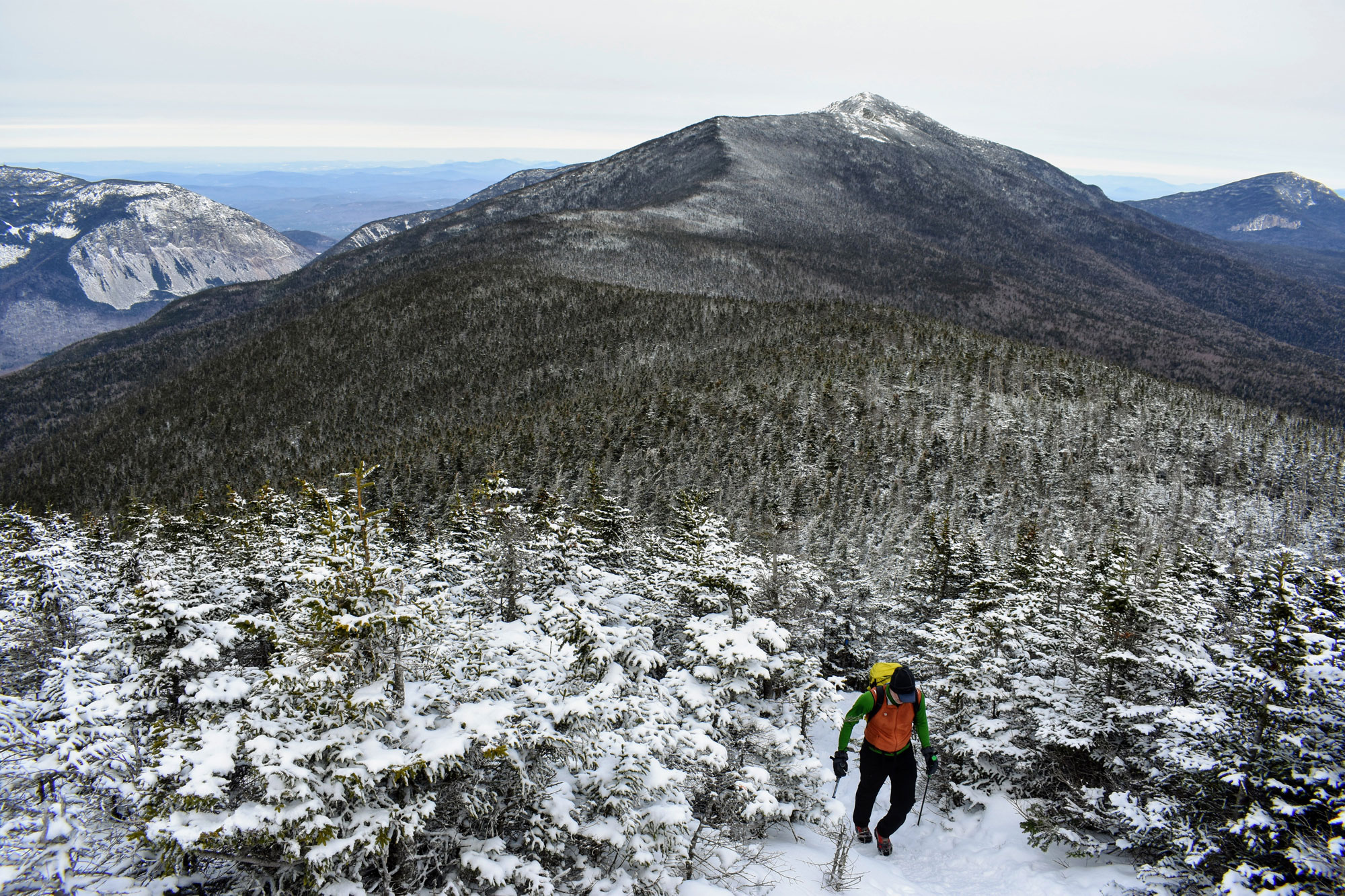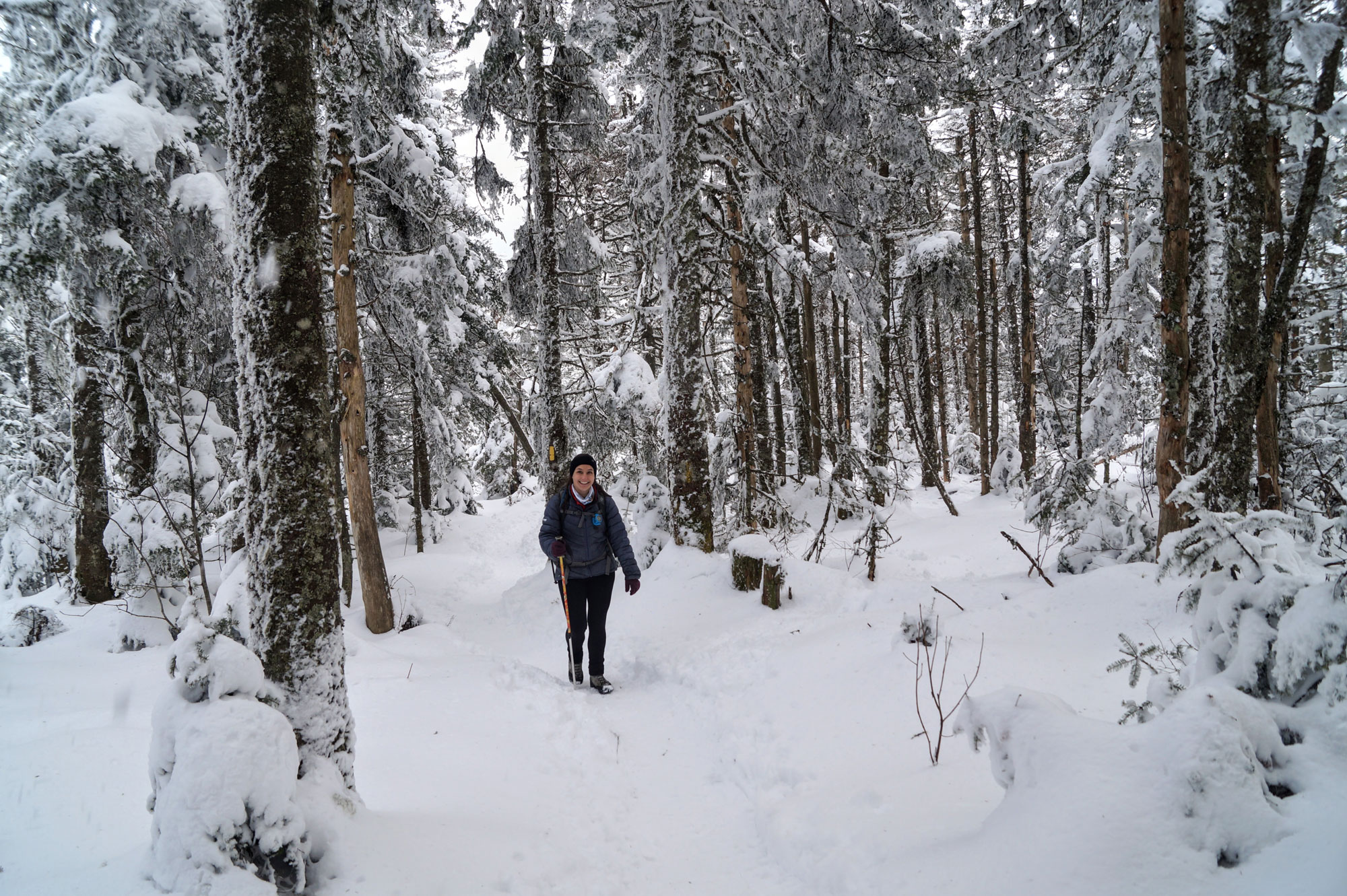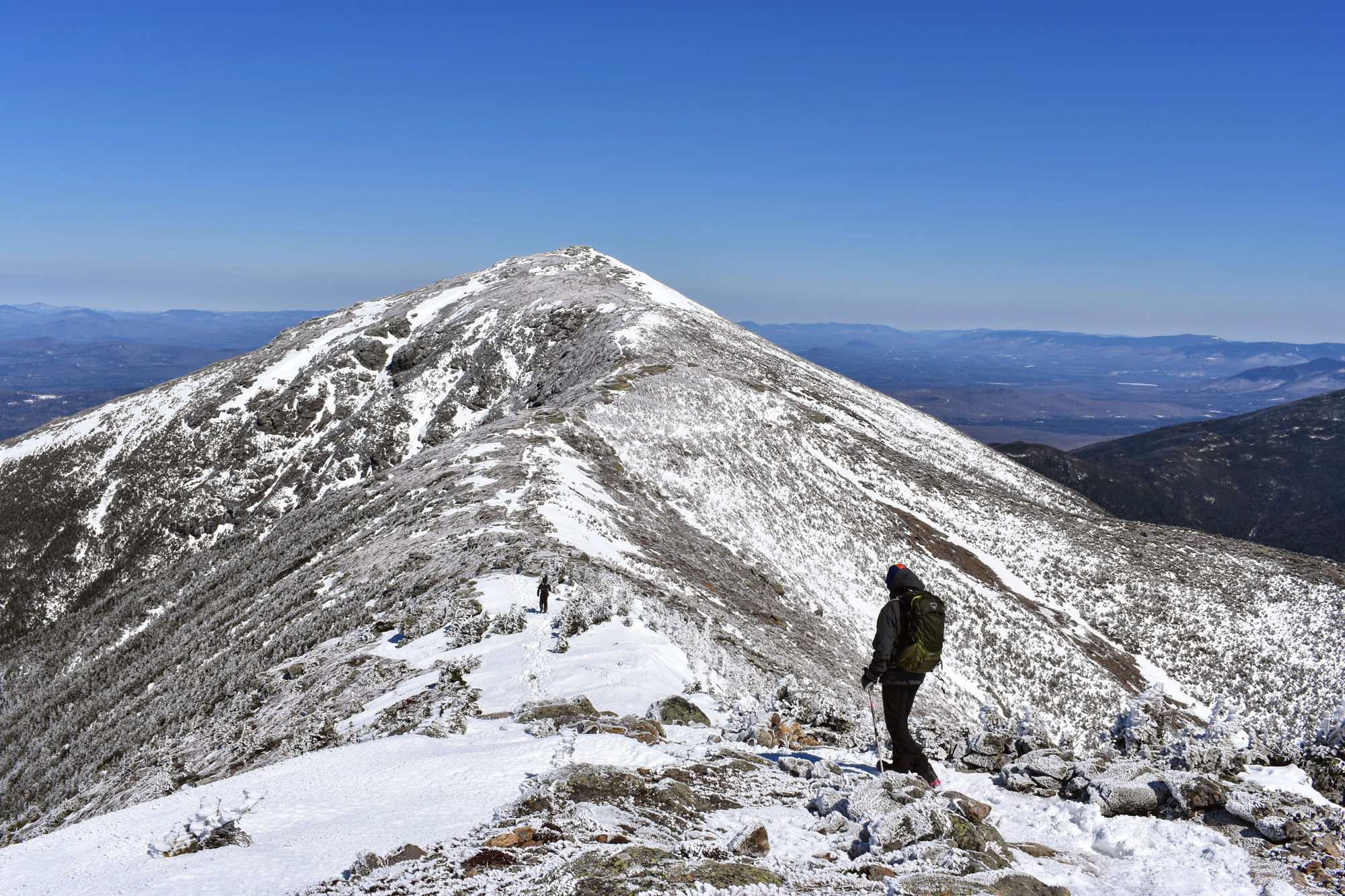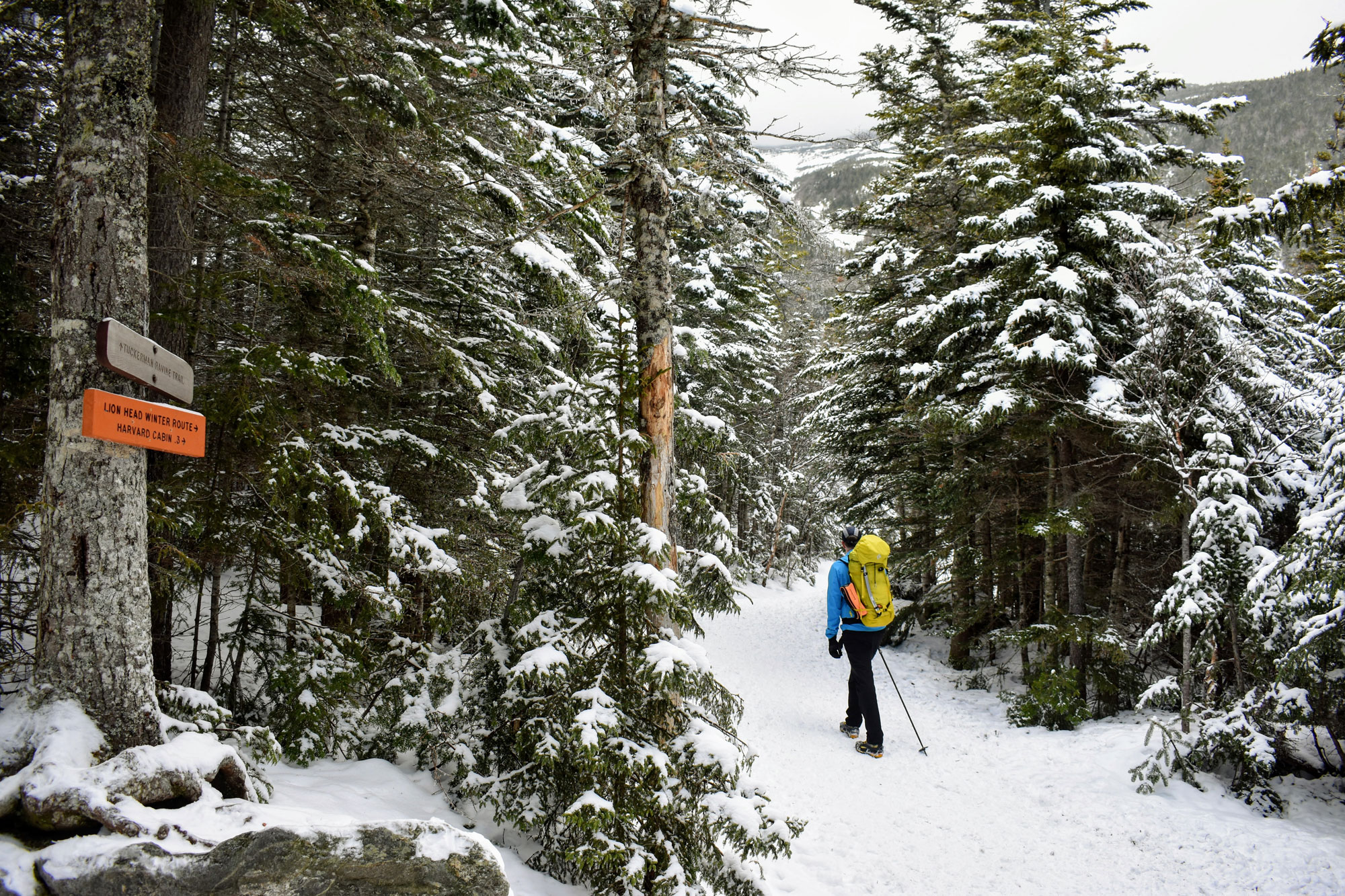If you’re planning to continue your mountain adventures even as the temperatures drop and the snow accumulates, keep reading for some tips on how to stay safe while winter hiking this season.

Winter Hiking “Dos”
Tell a friend: Spending an unplanned night out in the mountains of the Northeast is potentially deadly, even during the mildest months. Leave an itinerary and a return time with a responsible friend or relative. If you fail to get back by the prearranged time, they can direct help to you, speeding up the rescue effort.
Save yourself: Self-sufficiency is something every hiker should strive for, especially right now when rescuers and resources in busy regions like the White Mountains are so stressed due to added demand. Having extra layers, an emergency bivy, sleeping bag, and/or pad in your pack can make all the difference in the event of an accident or unplanned overnight.
Plan for shorter days: Winter days are a lot shorter. Starting early is a good strategy for maximizing daylight, and a headlamp is a nice safety net if you’re running behind schedule while winter hiking. Keep in mind it’s not only harder to navigate after the sun sets, it also gets significantly colder.
Stay hydrated: Sweat evaporates quickly and we lose more fluids through respiration in winter’s cold, dry air. Also, our body’s thirst response is diminished by up to 40% in the cold! Make sure to sip every time you stop and to protect your water from freezing by using an insulated bottle or by adding some sports drink to your water (the sugar and salt in it lowers the freezing point). Even better—bring a thermos of hot chocolate or sugary tea for some mid-route warmth and hydration.

Dress in layers: Having a variety of different layers allows you to adjust to both the weather and your level of exertion, minimizing sweating and keeping you dry and comfortable.
Remember your puffy at rest breaks: Leaving your puffy in the pack is a recipe for a rapid cooldown any time you stop for more than a minute or two. Putting it on while you’re standing still is a great way to maintain some of that warmth you’ve built up.
Feed the furnace: Studies show that exercising in cold weather like winter hiking burns more calories than exercising in warm weather. Eat regularly and pack cold-weather friendly foods that won’t freeze—PB&J, trail mix, and leftover pizza are all excellent options.
Study trail conditions: Reading trip reports from people who’ve recently hiked the same peak you’re planning to summit is a good way to get information about what you’ll be getting into. Pay close attention to information about deep snow and downed trees, two things that can really slow you down. If there are no recent trail reports, anticipate that you’ll likely be breaking trail from car to summit.

And “Don’ts”
Underestimate the challenge: Shorter days, harder terrain, and less forgiving weather all conspire to make winter hiking more demanding. That June hike that you finished with time to spare might end in the dark during December.
Tackle too-big objectives: If you’re just getting into cold-weather hiking, start small with hikes you are familiar with and know you can accomplish in the time you’ve allotted. Consider a guided trip if you have a bucket-list winter hike in mind, like Mount Washington, but are unsure of your abilities.
Go barefoot: Wading through deep snow is slow and exhausting, and ice is outright dangerous; consequently, it’s essential to have the appropriate flotation/traction device—whether it’s snowshoes, crampons, or Ice Talons/MICROspikes. Remember, the clear conditions you encounter at the trailhead don’t always reflect what you’ll come across at higher elevations.
Get fixed on a single objective: Learn to take what the weather gives you. If there are high winds above the treeline, audible to a more protected objective. If you make a last-minute pivot in your plan before losing cell service, make sure to update the person you left your itinerary with.

Fly blind: Know what weather you’re in for—and what type of hike to tackle— by checking Higher Summits Forecast (if you’re hiking near the Whites) before your trip. Remember the forecasted weather for the nearest town might be different from the surrounding summits.
Wear cotton: “Cotton kills” is a favorite saying of outdoorsy people. Cotton retains moisture (unlike synthetic and wool layers, which dry more quickly), nullifying its insulation properties—leaving you feeling cold and putting you on the path to hypothermia.
Start your hike too warm: Your body generates a lot of heat when hiking, especially in the mountains. Hitting the trail a little chilled and letting your excursion warm you up helps avoid soaking through critical layers early in your trip.
Think it can’t happen to you: Even if you’re with an experienced group, accidents happen; Sliding falls, fast-moving weather, and navigational issues are realities for even the most seasoned hikers. Being prepared for an unfortunate situation like this—both in terms of equipment and training—may make all the difference.
Lastly, whatever hiking trips you take this winter, DO remember to have fun and stay safe!

Tim Peck and Doug Martland
Tim and Doug met long ago at the Eastern Mountain Sports in Canton, Massachusetts. Bonding over a love of slick Quincy Quarry granite, White Mountain sufferfests, and scheming up adventures while folding tee-shirts, today Tim and Doug collaborate to write about their favorite outdoor activities and occasionally get nostalgic about tee-shirt tables.
Related Posts
April 2, 2024
10 Tips for Mountain Biking Etiquette During Mud Season
One rough spring could ruin the…




